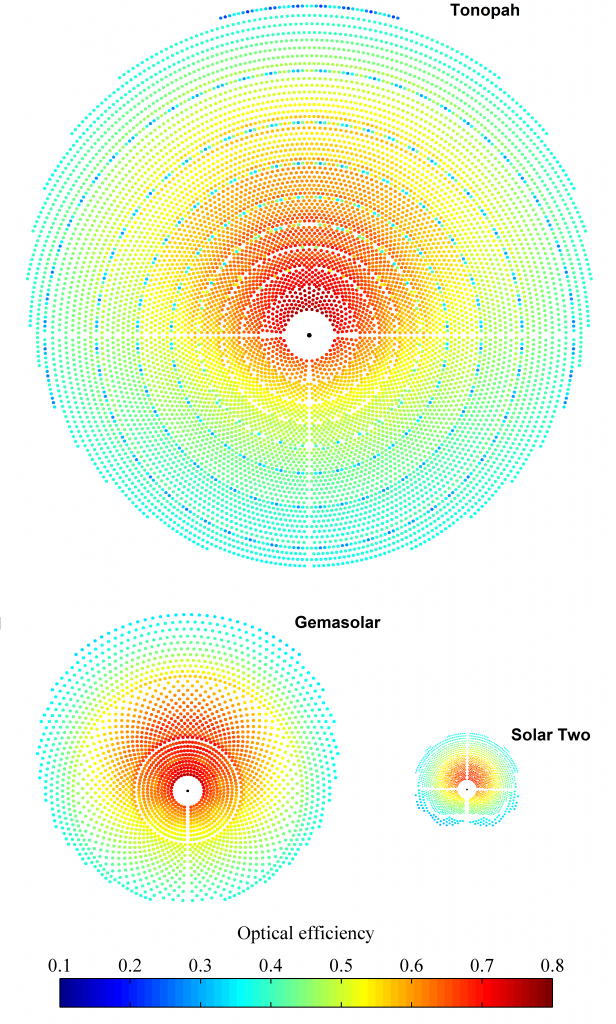Heliostat field

The heliostat field is a key system in Solar Power Tower plants. Thousands of heliostats reflect and concentrate solar radiation into the central receiver. Models must accurately predict the distribution of flux density on the receiver surface. Taking advantage of existing analytic functions on the image plane, an oblique projection methodology into the receiver has been developed and validated.
The ISE group has developed a code that is capable of computing the flux density distribution on the receiver as well as the heliostat optical loss factors (i.e. shading and blocking, spillage, cosine, atmospheric attenuation). Any heliostat field layout and receiver size can be introduced, resulting in a flexible tool.
Single and multi-aiming strategies are implemented in the computational model. For equatorial aiming, the animation below shows the maps of concentration throughout Equinox daytime. An optimized aiming strategy, taking into account the interaction with the receiver, is currently being investigated.Solar flux distribution on central receivers: A projection method from analytic function
Renewable Energy, 2015; 74; 576-587
A. Sánchez-González, D. Santana
Aiming factor to flatten the flux distribution on cylindrical receivers
Energy, 2018; 153; 113–125 A. Sánchez-González, M.R. Rodríguez-Sánchez, D. Santana
Aiming strategy model based on allowable flux densities for molten salt central receivers
Solar Energy, 2017; 157; 1130–1144
A. Sánchez-González, M.R. Rodríguez-Sánchez, D. Santana
Determination of heliostat canting errors via deterministic optimization
Solar Energy, 2017; 150; 136-146
A. Sánchez-González, C. Caliot, A. Ferrière, D. Santana
Software tool